




Did you find this useful? Give us your feedback


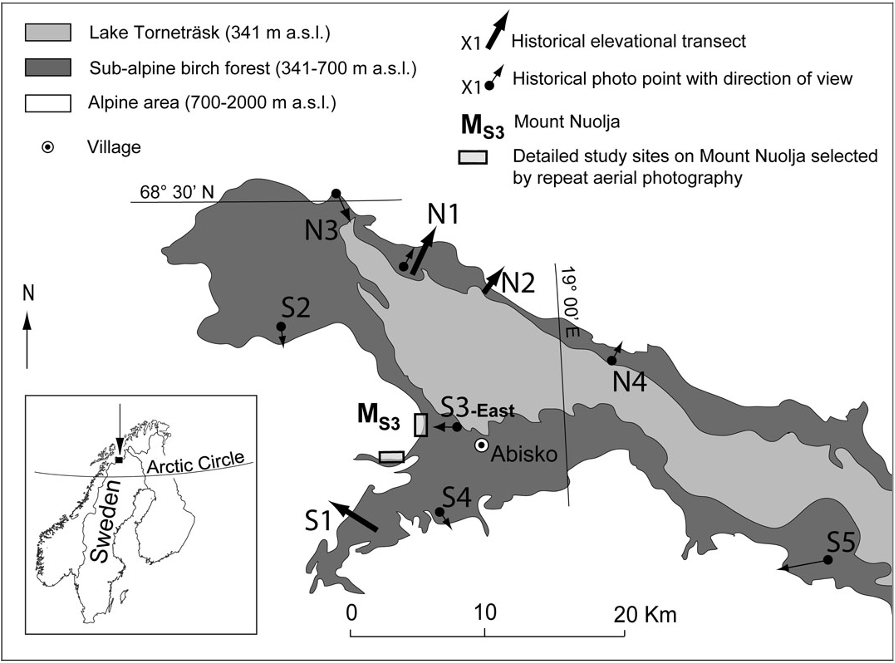
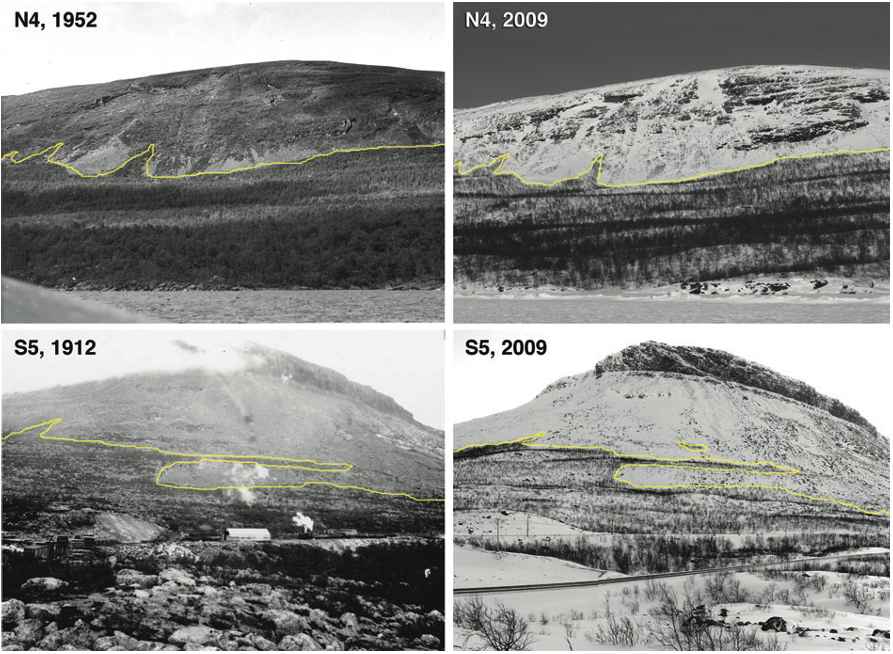
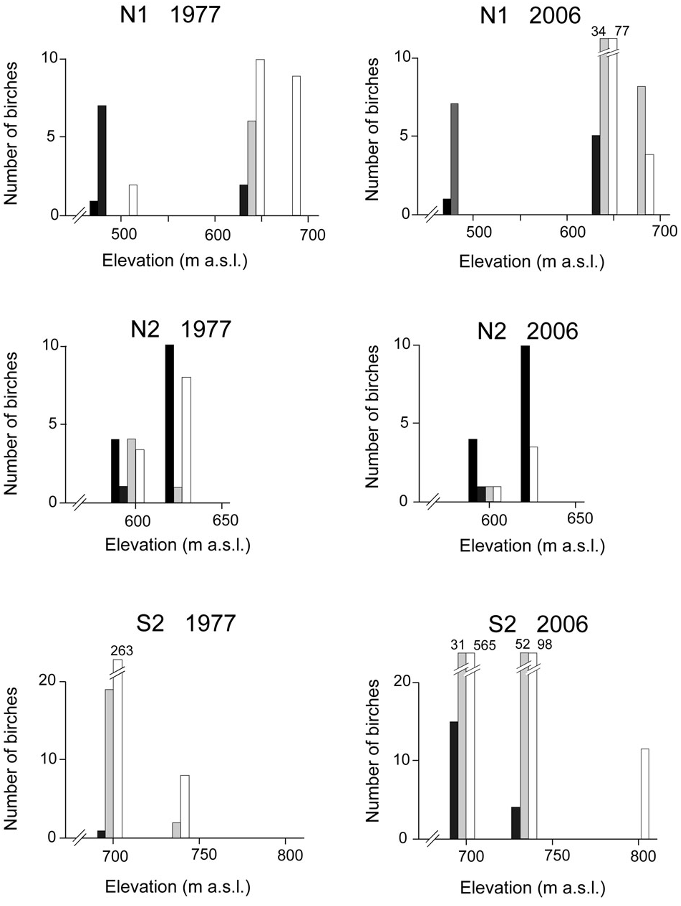
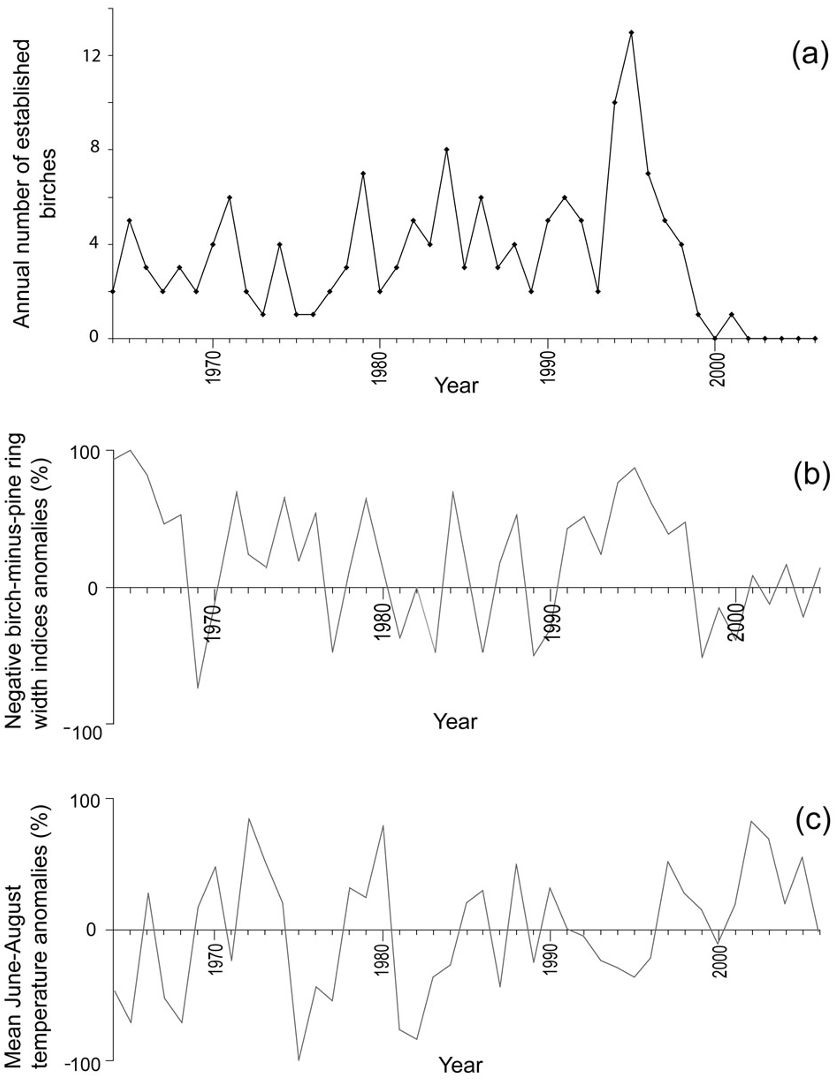
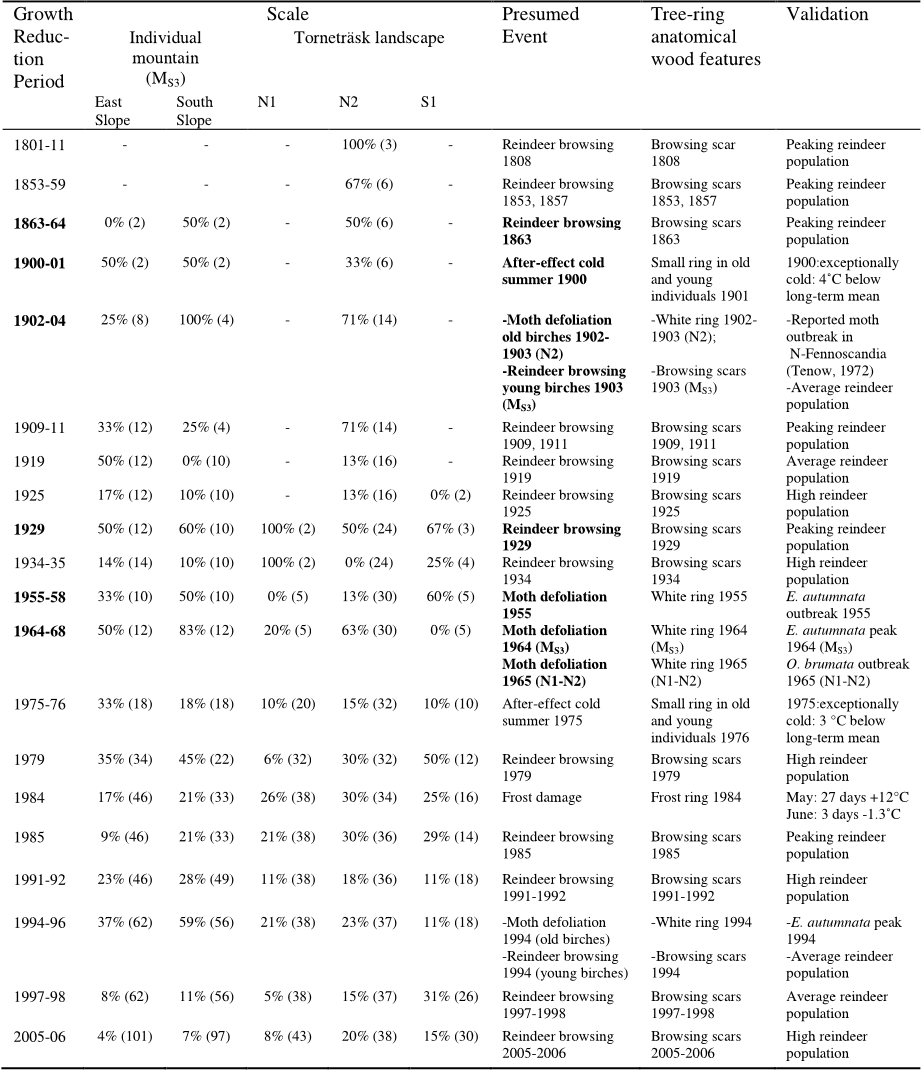
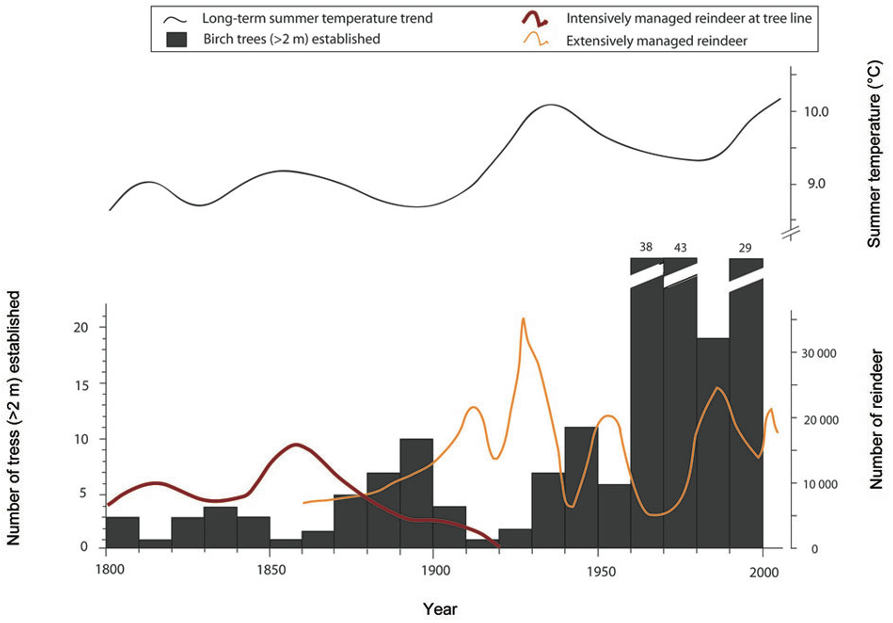
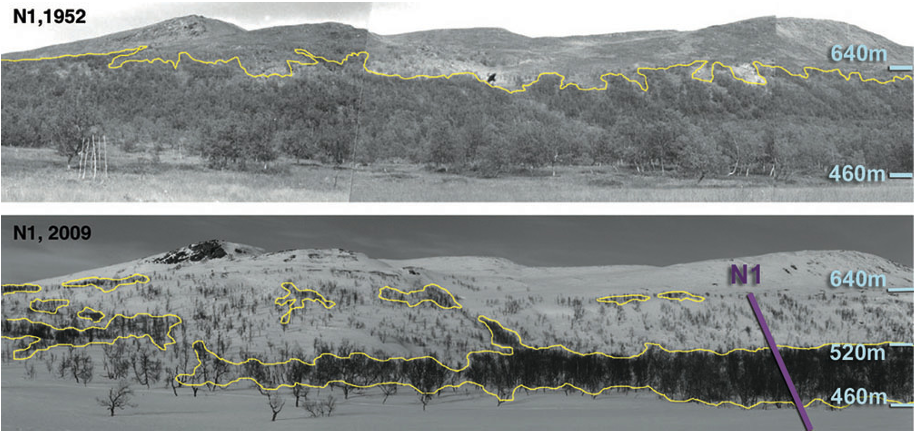





10 citations
9 citations
...In recent years, treeline change and ecology have gained much scientific attention, primarily as proxy for climate change and variability as well as vegetation dynamics [22,23,27,35,38,40]....
[...]
...As these inferences may be questioned, a complementary and particularly careful age structure analysis was performed in the belt where the treeline has advanced during the past century [27,28,57]....
[...]
...These present results contrast with those obtained through stem boring and ring count by Van Bogaert et al [27], who inferred minimum establishment of new birches at the treeline during the warm 1930s and maximum during the relatively cold 1960s and 1970s [27]....
[...]
...This circumstance further conflicts with the view advocated by, claiming that reindeer rather than climate warming are more important for birch establishment, growth and treeline rise than climate change [27]....
[...]
...For example, some prior works are founded on imprecise treeline definitions and poor up-todate field-based reconnaissance of present-day treeline positions of defined tree species [20-27]....
[...]
9 citations
9 citations
...…central and western Canada, studies to date have detected a mixture of changes such as decline in tree cover, no net change, local afforestation, or increases in stem density within existing stands (Van Bogaert et al. 2011; Brown and Johnstone 2012; Mamet and Kershaw 2012; Baltzer et al. 2014)....
[...]
9 citations
1,775 citations
1,311 citations
1,003 citations
...In contrast to Harsch et al. (2009) who concluded that the role of disturbance during recent climate warming is restricted to determining when tree line advance will occur, this study shows that disturbance and its after-effects may equally well determine ı́f tree line advance will occur at all....
[...]
...As the location of elevational and polar tree lines is mainly caused by heat deficiency, in the Northern Hemisphere climate warming is expected to cause tree lines to advance to higher elevations and more northerly latitudes (Harsch et al., 2009)....
[...]
...…widely held expectations of vegetation responses to warming, i.e. that Arctic tree lines will move northwards and elevational tree lines upslope (Harsch et al., 2009), this study documented highly varying tree line dynamics for the Torneträsk area in sub-Arctic Sweden during a period of…...
[...]
...A global study by Harsch et al. (2009) showed that only 52% of all 166 global tree line sites had advanced over the past 100 years despite documented amplified climate warming at high-elevation areas and northern latitudes (ACIA, 2005)....
[...]
518 citations
334 citations
...In contrast to other studies (Danby & Hik, 2007; Kullman & Öberg, 2009), slope aspect and inclination were not correlated with elevational shifts of the tree line ecotone....
[...]